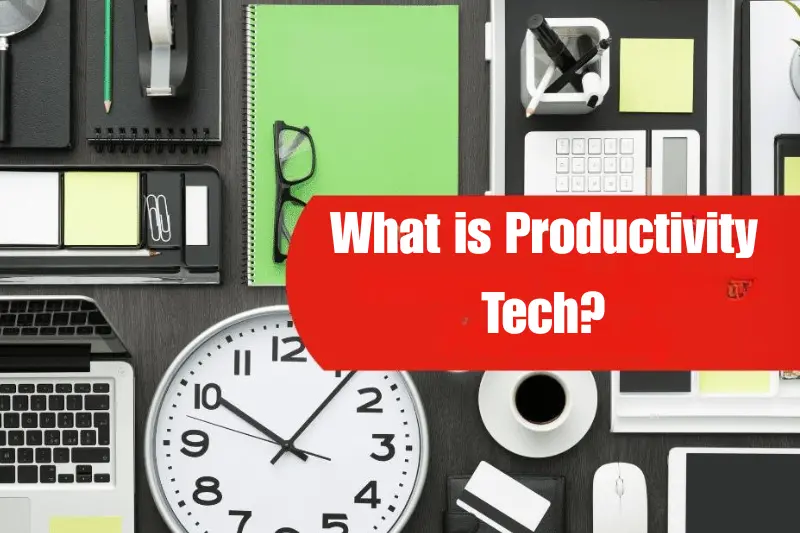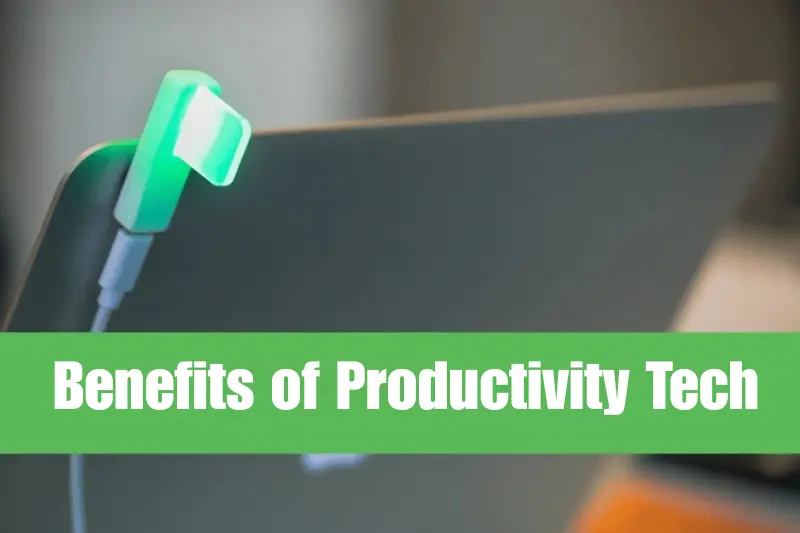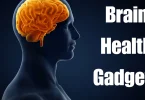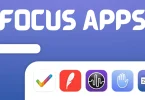In today’s fast-paced digital world, Productivity Tech is not just a luxury—it’s a necessity. From individuals managing daily to-do lists to large corporations optimizing operations, productivity technology plays a crucial role in streamlining tasks, saving time, and increasing efficiency. But what exactly is productivity tech, and how can it transform the way we work and live?
This comprehensive guide will walk you through everything you need to know about Productivity Tech—its meaning, types, benefits, popular tools, trends, and how to use it effectively.
What is Productivity Tech?

Productivity Tech refers to any technology, software, or digital tool designed to help individuals and organizations accomplish tasks more efficiently. These technologies are crafted to:
- Automate repetitive tasks
- Improve time management
- Facilitate collaboration
- Reduce distractions
- Enhance focus and workflow
They span across various domains including project management, communication, scheduling, automation, and even mental health support.
You may also like to read this:
Powerful Strength And Performance Tools For Success
Body Optimization Tech For Better Health In 2025
Best Focus Apps For Better Time Management In 2025
14 Best Mental Clarity Tools To Boost Focus & Productivity
2025’s Best Brain Health Gadgets For Productivity & Focus
Mindfulness Technology: Top Digital Tools For A Calmer Life
Types of Productivity Tech
Productivity tech encompasses a wide range of tools tailored to improve efficiency, time management, collaboration, and focus. These tools can be broadly categorized into the following segments:
1. Task Management Tools
Overview:
Task management tools are designed to help individuals and teams plan, track, and prioritize tasks. These platforms typically allow you to create to-do lists, set deadlines, assign tasks, and track progress.
Key Benefits:
- Keeps work organized
- Prevents missed deadlines
- Enhances accountability and personal productivity
Popular Examples:
- Trello: Uses a Kanban board system where users can create lists and cards to represent tasks, making it easy to track project stages.
- Asana: Offers detailed task assignments, custom workflows, and calendar views ideal for team coordination.
- Todoist: A user-friendly to-do list app with recurring tasks, priorities, and productivity graphs.
- Microsoft To Do: Syncs with Outlook and allows users to manage personal and professional tasks in one place.
2. Project Management Software
Overview:
Project management software helps teams coordinate large projects that involve multiple people, complex workflows, dependencies, and timelines. These platforms include tools for scheduling, tracking milestones, and reporting.
Key Benefits:
- Centralizes project planning and updates
- Improves team collaboration
- Tracks progress toward project goals and deliverables
Popular Examples:
- Monday.com: A visually intuitive platform offering timelines, dashboards, automation, and team collaboration.
- ClickUp: A highly customizable tool that supports tasks, documents, goals, time tracking, and more—all in one app.
- Wrike: Known for its flexibility and robust reporting, ideal for marketing and creative teams.
- Notion: Combines note-taking, task management, wikis, and databases for customizable project workflows.
3. Time Tracking Tools
Overview:
These tools monitor how time is spent on tasks or applications. They are especially useful for freelancers, consultants, remote workers, and companies needing to optimize productivity or bill by the hour.
Key Benefits:
- Reveals time sinks and productivity patterns
- Helps in accurate billing and project budgeting
- Encourages better time management
Popular Examples:
- Toggl Track: A simple time tracker that supports one-click tracking and detailed reporting across devices.
- Clockify: A free tool that offers timers, manual entries, team tracking, and productivity reports.
- RescueTime: Runs in the background and provides insights into time spent on apps and websites.
- Harvest: Combines time tracking with invoicing and expense tracking, ideal for businesses and agencies.
4. Automation Tools
Overview:
Automation tools streamline and automate repetitive workflows, saving time and reducing errors by connecting various apps and services.
Key Benefits:
- Increases operational efficiency
- Reduces manual effort and human error
- Enables seamless app integrations
Popular Examples:
- Zapier: Connects 5,000+ apps to create automated workflows (“Zaps”) without any coding.
- IFTTT (If This Then That): Ideal for automating personal tasks, smart devices, and social media actions.
- Microsoft Power Automate: Part of the Microsoft ecosystem, great for enterprise-grade automation across Office 365 apps.
- Automate.io: A cost-effective automation platform supporting popular business tools like Salesforce, Trello, and Gmail.
5. Communication and Collaboration Tools
Overview:
These tools facilitate real-time messaging, file sharing, meetings, and team collaboration, especially for distributed teams or hybrid workplaces.
Key Benefits:
- Enhances communication and feedback loops
- Improves team transparency
- Supports both synchronous and asynchronous collaboration
Popular Examples:
- Slack: A messaging platform with channels, threads, integrations, and bots for efficient team communication.
- Microsoft Teams: Offers chat, video meetings, file sharing, and Office app integration in one workspace.
- Zoom: One of the most widely used tools for video conferencing, virtual meetings, and webinars.
- Google Workspace: Includes Gmail, Google Meet, Drive, Docs, Sheets, and Calendar for seamless team collaboration.
6. Focus and Distraction Management Tools
Overview:
These tools are designed to help individuals stay focused by reducing digital distractions, managing screen time, or creating optimal environments for deep work.
Key Benefits:
- Boosts concentration and mental clarity
- Encourages deep work sessions
- Helps create healthier tech habits
Popular Examples:
- Forest: Uses gamification to promote focus—plant a virtual tree and let it grow as long as you stay off your phone.
- Freedom: Blocks websites, apps, or the internet entirely to eliminate distractions.
- Cold Turkey: A powerful blocker that can lock down apps, browsers, and even your computer for set time periods.
- Focus@Will: Offers focus-enhancing background music scientifically designed to improve attention and productivity.
7. Note-Taking and Knowledge Management Apps
Overview:
These apps help capture, organize, and retrieve notes, ideas, and knowledge, which is essential for students, professionals, and content creators.
Key Benefits:
- Centralizes knowledge and reference material
- Encourages idea development and information sharing
- Aids in planning and creative processes
Popular Examples:
- Evernote: Allows users to capture notes, images, voice memos, and web clippings in searchable notebooks.
- Notion: A powerful workspace for notes, task tracking, wikis, and databases with collaborative features.
- Obsidian: Markdown-based knowledge manager with backlinking and graph views for building personal knowledge systems.
- OneNote: A digital notebook integrated into Microsoft 365, with support for typed, handwritten, and audio notes.
8. Cloud Storage and File Management
Overview:
Cloud storage platforms provide secure access to files from any device, making it easy to store, back up, share, and collaborate on documents and media.
Key Benefits:
- Enables remote file access and collaboration
- Protects against data loss
- Simplifies file sharing and organization
Popular Examples:
- Google Drive: Offers cloud storage with real-time collaboration on Docs, Sheets, and Slides.
- Dropbox: Known for its reliability and advanced file syncing features across devices.
- OneDrive: Microsoft’s cloud storage service that integrates with Windows and Office apps.
- iCloud: Apple’s storage solution that syncs seamlessly across iOS and macOS devices.
Benefits of Productivity Tech

Implementing productivity technology in your workflow—whether you’re an individual, a team leader, or a business owner—can transform how tasks are handled, time is managed, and results are delivered. Below are the key benefits, explained in depth:
✅ 1. Time Savings
What it means:
Productivity tech helps automate repetitive tasks and streamlines daily workflows, freeing up valuable hours that can be redirected toward high-impact activities.
How it works:
- Automation tools (like Zapier or Microsoft Power Automate) eliminate manual processes such as sending repetitive emails, updating spreadsheets, or transferring data between apps.
- Task and project management apps help users prioritize efficiently, avoiding the need to waste time figuring out what to do next.
Real-World Example:
Instead of manually copying leads from your email into a CRM, a Zapier workflow can automatically transfer the information, saving you hours per week.
✅ 2. Better Focus
What it means:
Staying focused in a digital environment is tough. Productivity tools minimize distractions and create structured work periods to enhance mental clarity.
How it works:
- Focus tools like Forest, Focus@Will, or Cold Turkey reduce digital noise by blocking distracting websites and apps.
- Pomodoro timers segment work into manageable intervals (e.g., 25 minutes of focus followed by a 5-minute break), improving mental stamina and task completion.
Real-World Example:
A student preparing for exams can use Forest to limit social media usage and stick to study sessions without interruptions.
✅ 3. Increased Efficiency
What it means:
Having all your essential tools—communication, documents, task lists, calendars—in one place means less time switching between platforms and more time executing work.
How it works:
- Integrated platforms like Notion, ClickUp, and Microsoft Teams centralize documents, communication, and task assignments.
- Reducing context-switching (jumping from one tool to another) improves cognitive efficiency and reduces fatigue.
Real-World Example:
A marketing team using Notion can access campaign plans, to-do lists, analytics, and meeting notes in one centralized workspace.
✅ 4. Improved Collaboration
What it means:
Productivity tech allows team members—whether remote, hybrid, or in-office—to work together in real time or asynchronously with ease.
How it works:
- Tools like Slack, Zoom, and Google Workspace make it easy to share files, hold meetings, and provide updates instantly.
- Project management platforms give every team member visibility into what others are working on, reducing confusion and duplication of effort.
Real-World Example:
A global product development team can use ClickUp to track progress on design, engineering, and testing—without waiting for email updates or meetings.
✅ 5. Accountability and Transparency
What it means:
Managers and teams can easily see what’s being worked on, by whom, and when it’s due. This fosters trust and personal responsibility.
How it works:
- Time tracking apps like Toggl or Harvest log how long tasks take, making workloads and bottlenecks visible.
- Task and project dashboards show progress in real-time, offering full transparency for clients and stakeholders.
Real-World Example:
A digital agency can use Clockify to track billable hours for different clients and share transparent reports with them at the end of each month.
✅ 6. Scalability
What it means:
As your team, company, or workload grows, productivity tools make it easier to scale operations without sacrificing organization or performance.
How it works:
- Most productivity platforms offer tiered plans, advanced permissions, and team roles, allowing businesses to add users, workflows, and automation as they expand.
- Cloud-based systems ensure that processes, documents, and collaborations are accessible anywhere—supporting flexible and remote expansion.
Real-World Example:
A startup using ClickUp for project management can expand from 5 to 50 team members while keeping the same tool—just by upgrading features and organizing tasks by departments.
Popular Productivity Tech in 2025
Here are some of the top-rated productivity tools of 2025:
| Tool Name | Category | Key Feature |
| Notion | All-in-One Workspace | Combines notes, tasks, database, and docs |
| ClickUp | Project Management | Highly customizable dashboards |
| Slack | Communication | Real-time team messaging |
| Forest | Focus | Grow trees as you stay focused |
| Zapier | Automation | Connects 5000+ apps for workflow automation |
| Clockify | Time Tracking | Free and intuitive time tracking |
Trends in Productivity Tech (2025 and Beyond)
As the world continues to embrace digital solutions for daily tasks, the landscape of productivity technology is evolving rapidly. The latest trends are shifting the way we manage our time, collaborate, and optimize our work habits. Let’s explore the key trends shaping productivity tech in 2025 and beyond:
🔹 AI-Driven Tools
What it means:
Artificial Intelligence (AI) is no longer a futuristic concept—it’s becoming a critical part of productivity tools. AI-driven apps are helping users automate complex tasks, make smarter decisions, and improve efficiency by learning from user behavior.
How it works:
- Task and project management tools use AI to suggest next steps, prioritize tasks, and even predict potential delays. For example, AI can suggest the best time to schedule meetings or highlight tasks that need attention.
- Meeting assistants are capable of summarizing conversations, generating action items, and even drafting follow-up emails or reports.
- Data entry automation is another major benefit of AI. Tools like Zapier and Microsoft Power Automate use AI to capture data and fill out forms without human intervention.
Real-World Example:
An AI-powered tool like Trello can now predict the progress of a project based on historical data, allowing teams to adjust timelines and resources proactively.
🔹 Voice-Based Productivity
What it means:
Voice assistants are becoming an indispensable part of daily productivity routines. By simply using voice commands, users can schedule appointments, set reminders, send messages, or navigate complex workflows.
How it works:
- Smart assistants like Siri, Alexa, and Google Assistant are continuously being integrated into productivity apps. With voice commands, users can:
- Create to-do lists
- Send emails
- Set up calendar events
- Search for files
- Create to-do lists
- Many apps are now offering voice-to-text functionality, making it easier to dictate notes, reports, or even code.
Real-World Example:
A busy executive can ask Google Assistant to schedule a meeting, add items to their calendar, and even dictate an email—all while commuting or multitasking.
🔹 Neurotech Integration
What it means:
Neurotechnology is focused on monitoring and enhancing brain activity. As people strive to improve mental focus, clarity, and overall well-being, wearables and neurotech devices are being integrated into productivity tools to help manage stress, focus, and cognitive performance.
How it works:
- Wearables such as Muse or Halo Neuro track brainwave activity and offer real-time feedback on mental states, such as focus, relaxation, and stress levels.
- These tools can be integrated with productivity apps to suggest optimal times for working or taking breaks, enhancing performance and minimizing mental fatigue.
- Some apps are using biofeedback techniques to help users develop better mental habits—such as staying focused longer or relaxing more efficiently.
Real-World Example:
A creative professional using Muse can monitor their brain activity to understand when they’re most focused or when their mind tends to wander, enabling them to plan their work schedule for maximum efficiency.
🔹 Hybrid Work Optimization
What it means:
With the shift toward remote and hybrid work, companies need tools that help manage both in-office and remote employees seamlessly. Hybrid work optimization tools are designed to balance productivity, collaboration, and communication across diverse work environments.
How it works:
- Project management software (such as ClickUp or Notion) allows for asynchronous collaboration, where team members can contribute to projects without needing to be online simultaneously.
- Cloud-based communication tools like Microsoft Teams and Slack offer real-time messaging, video calls, and file sharing, enabling teams to stay connected and collaborate effortlessly regardless of location.
- Hybrid work scheduling tools help businesses track in-office attendance, remote work patterns, and even manage task delegation for both environments.
Real-World Example:
A marketing team at a global company uses Monday.com to track campaign progress, assign tasks, and manage deadlines in a hybrid setup where team members are working from both home and the office.
🔹 Mindfulness and Wellness Tools
What it means:
As work-life balance and mental health become more important, many productivity tools are incorporating wellness features to reduce burnout and promote better work habits. These tools focus on stress management, mindfulness, and overall well-being, recognizing that mental health is crucial for sustainable productivity.
How it works:
- Meditation apps like Headspace or Calm are now integrated with productivity platforms, offering guided meditation sessions to reduce stress during work hours.
- Wellness tracking features monitor daily habits like sleep, exercise, and relaxation to provide insights into overall health.
- Break reminders and focus timers like Pomodoro-style sessions in tools such as Forest and Focus@Will encourage users to take regular breaks, which helps recharge mental focus and energy.
Real-World Example:
A project manager using Forest can set a timer to stay focused for 25 minutes while also being encouraged to take a mindfulness break afterward, maintaining both productivity and well-being.
How to Choose the Right Productivity Tech
When selecting tools, consider the following:
- Your Goals: Are you trying to manage time, reduce distractions, or enhance team collaboration?
- Ease of Use: Complex interfaces can reduce productivity.
- Integration: Ensure compatibility with tools you already use.
- Scalability: Choose tools that can grow with your needs.
- Budget: Many tools offer free tiers or affordable plans for small teams.
Tips to Maximize Productivity Tech
- Don’t Overload on Tools – Use fewer apps with multi-functionality rather than juggling many.
- Customize to Fit Your Workflow – Take time to tailor dashboards, labels, and automations.
- Review and Refine Regularly – Analyze what works and iterate.
- Train Your Team – Ensure everyone is using the tech efficiently.
- Integrate with Other Tools – Leverage automation and integrations to build seamless workflows.
Conclusion
Productivity Tech is redefining the way we work, study, and live. From streamlining workflows and cutting down time waste to improving focus and enhancing collaboration, the impact is profound. Whether you’re a student, a remote worker, an entrepreneur, or part of a large enterprise, embracing the right productivity technology can transform your output and success.
As we look toward the future, staying updated on the latest innovations and integrating them smartly into your daily routine will be key to thriving in a tech-driven world.
FAQs
1. What is productivity tech?
Productivity tech includes digital tools that help individuals and teams manage tasks, automate workflows, track time, and enhance focus, improving overall efficiency.
2. How does AI enhance productivity tools?
AI automates repetitive tasks, offers smart suggestions, and analyzes data to improve workflows and save time.
3. What is the role of voice-based productivity tools?
Voice assistants like Siri and Alexa help manage schedules, set reminders, and perform tasks hands-free, improving efficiency.
4. How do neurotech devices improve productivity?
Neurotech devices like Muse and Halo Neuro monitor brain activity, offering insights to optimize focus and mental performance.
5. What tools are best for hybrid work environments?
Tools like Slack, Microsoft Teams, and Notion help manage communication, collaboration, and project tracking for hybrid teams.



